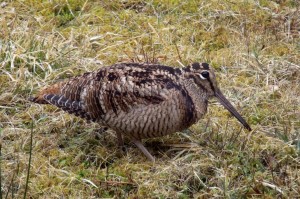 Calendars for 2016 will now have gone up and many readers will have received one or chosen one that epitomises the wildlife of the Highlands. The choice is very varied with some calendars choosing a single type of bird or animal or a selection. This year I have ended up with three calendars all of which will go in my study to serve different purposes. One is not strictly wildlife as such as it is a series of superb photographs of Highland cattle and I am pleased to see that one of the months depicts a black Highlander. Perhaps not many people realise that at one time, including the great droving days of Highland cattle, most of them were of the black form. These black Highlanders are less common these days and are more expensive. There are a few around Inverness but most of the “Folds”, as groups of Highland cattle are called, are of the much commoner reddish forms.
Calendars for 2016 will now have gone up and many readers will have received one or chosen one that epitomises the wildlife of the Highlands. The choice is very varied with some calendars choosing a single type of bird or animal or a selection. This year I have ended up with three calendars all of which will go in my study to serve different purposes. One is not strictly wildlife as such as it is a series of superb photographs of Highland cattle and I am pleased to see that one of the months depicts a black Highlander. Perhaps not many people realise that at one time, including the great droving days of Highland cattle, most of them were of the black form. These black Highlanders are less common these days and are more expensive. There are a few around Inverness but most of the “Folds”, as groups of Highland cattle are called, are of the much commoner reddish forms.
One of the two wildlife calendars are from original paintings and show a wide variety of birds plus two scenes. They range from a group of swifts that look as though they are showing off in their spectacular flights to a group of blackcock displaying with the magnificent males dominant. One of my favourite images is of a gyrfalcon chasing a ptarmigan. However, the most outstanding painting is the one of a woodcock, one of my favourite birds. The woodcock is in flight going up a woodland ride and what is very special about the painting is that it was done entirely with a single feather from a woodcock. The feather is very short, stiff and sharply pointed and you get them from the wing joint in a woodcock. The artist, Colin Woolf, is renowned for his pin-feather work but his affinity with his pinfeather work and, in particular, the woodcock is outstanding. The woodcock has always been an enigmatic bird and steeped in folklore and myths. It is a wader that nests on the ground in woodland which is unusual. Its superb camouflage of varying shades of brown barring, which can be seen in the photograph, enables it to foil predators. Its extra long beak enables it to get food such as worms at various levels in the soil. Many of the breeding woodcock in the Highlands move west to Ireland for the winter but we get a very large influx of birds from Scandinavia and far beyond that spend the winter here.
The third calendar is an unusual bird calendar as every month it has the same type of bird, the puffin, which is one of my favourite seabirds. Whilst there may be other attractive birds in the UK perhaps none can match the beak of the puffin with its peculiar shape and dramatic colours. No wonder then that one of its many other names is “sea parrot”. It has always been a popular seabird, partly because of its sheer numbers breeding on some islands and partly because it was often eaten. It was one of the main foods of the St. Kildans at one time when the islanders could see so many in the air at once that they blotted out the sun. These days it is still caught and eaten in Iceland which is a fact often overlooked. The many Scots names include “Marrot”, “Tammie Cheekie” and ”Bass Cock” whilst there are three Gaelic names. The Latin name of Fratercula means little brother, hence a friar referring to the habit of the puffin interlocking its feet like hands in prayer.
Happy New Year!
Tags: highland birds
